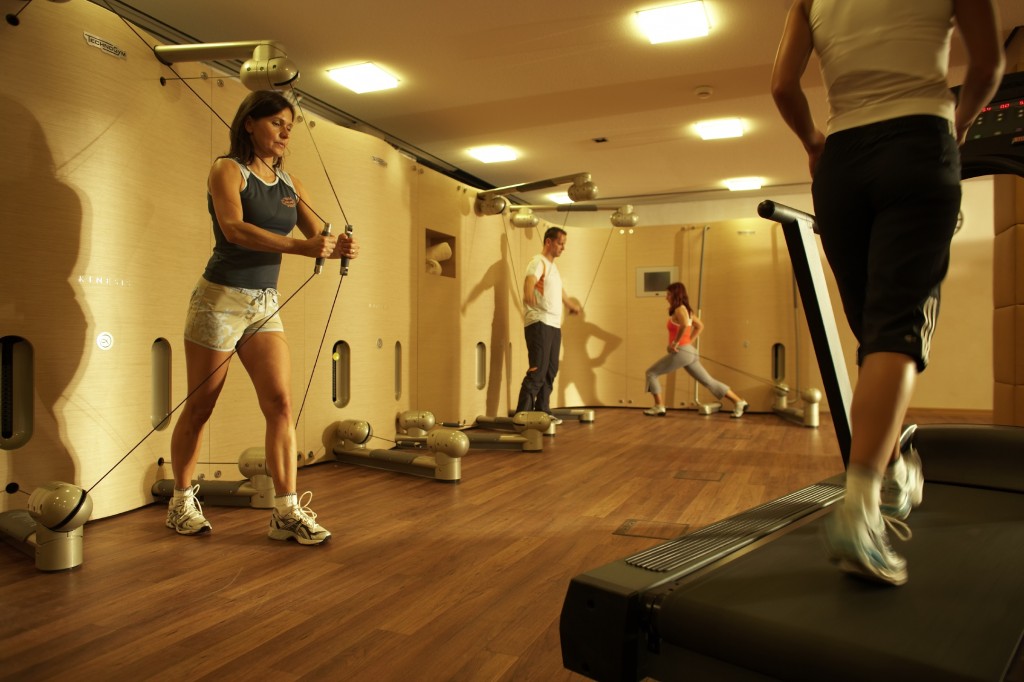
Reap the Rewards of Exercise Intensity
Photo Credit: Hotel Der Oeschlberghof, via Flickr Creative Commons
The intensity of exercise is a measure of how hard the exercise is for you to do. This can also mean how hard the exercise feels while you are doing it. Exercise intensity is most often measured by your breathing and heart rate as well as how fatigued your muscles feel.
You’ll get the most from your workouts if you’re exercising at the proper exercise intensity for your health and fitness goals.
There are two basic ways to measure exercise intensity:
How You Feel
Exercise intensity can be a subjective measure of how hard physical activity or exercise feels to you while you’re doing it — your perceived exertion. Your perceived level of exertion may be different from what someone else feels doing the same exercise. For example, a hard run can feel like an easy workout to someone who’s more fit.
For many people, especially patients recovering from heart surgery or a heart procedure, this method of measuring intensity is very important in the early stages of recovery. This allows us as clinicians to be in touch with how you feel versus going only by the numbers such as heart rate or blood pressure.
Your Heart Rate
Your heart rate, on the other hand, offers a more objective look at exercise intensity. In general, the higher your heart rate during exercise, the higher the exercise intensity.
Studies show that your perceived exertion correlates well with your heart rate. So if you think you’re working hard, your heart rate is likely elevated.
Gauging Intensity Using Your Heart Rate
A frequently used method to gauge exercise intensity is to check your heart rate during exercise. To use this method, you first have to figure out your maximum heart rate — the upper limit of what your cardiovascular system can handle during physical activity.
The basic way to calculate your maximum heart rate is to subtract your age from 220. For example, if you’re 45 years old, subtract 45 from 220 to get a maximum heart rate of 175. This is the maximum number of times your heart should beat per minute while you’re exercising.
Once you know your maximum heart rate, you can calculate your desired target heart rate zone — the level at which your heart is being exercised and conditioned, but not overworked.
Here’s how heart rate matches up with exercise intensity levels:
- Moderate exercise intensity: 50-70% of your maximum heart rate
- Vigorous exercise intensity: 70-85% of your maximum heart rate
If you’re not fit or you’re just beginning an exercise program, aim for the lower end of your target zone (50 percent). Then, gradually build up the intensity. If you’re healthy and want a more vigorous workout, you can choose the higher end of the zone.
Target Heart Rate Tips
It’s important to note that maximum heart rate is just a guide. You may have a higher or lower maximum heart rate, sometimes by as much as 15 to 20 beats per minute. If you want a more definitive range, consider discussing your target heart rate zone with an exercise physiologist or a personal trainer who has experience in this area. You may also want to discuss with your physician the possibility of having a baseline stress test to determine your cardiorespiratory fitness. The information obtained from a stress test can personalize your target heart rate based on your fitness level, making it much more accurate.
Also note that several types of medications can lower your maximum heart rate and, therefore, lower your target heart rate zone. Ask your doctor if any medications you are taking can affect your heart rate. If so, the general calculations mentioned above may be very inaccurate and most likely shouldn’t be used to determine your target heart rate.
Remember that our goal should be to make exercise specific to each person based on his or her interests, abilities, experience, medical history and goals. Often the use of “general” charts like the target heart rate or body mass index can be misleading and in the case of target heart rate could be harmful if misused.
Reap the Rewards of Exercise Intensity
You’ll get the most from your workouts if you’re exercising at the proper exercise intensity for your health and fitness goals. If you’re not feeling any exertion or your heart rate is too low, pick up the pace. If you’re worried that you’re pushing yourself too hard or your heart rate is too high, back off a bit. Also remember that every day doesn’t have to be the same. Some days we feel great, others a little less motivated. Try to stick with it. It’s more about consistency over weeks and months than high intensity and pushing every workout.
How do you most effectively monitor your exercise intensity to ensure you’re getting a good workout?








